
-
Find the right food for your petTake this quiz to see which food may be the best for your furry friend.Find the right food for your petTake this quiz to see which food may be the best for your furry friend.Featured products
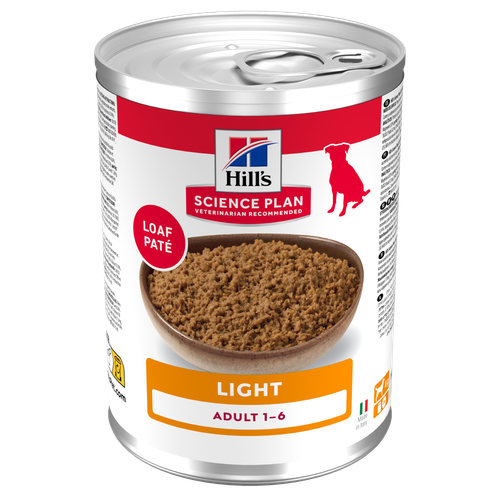 Adult Light Dog Food
Adult Light Dog FoodHill's Science Plan Light Adult Wet Dog Food is a complete premium pet food for adult dogs that tend to gain weight easily. This deliciously smooth loaf is formulated to deliver the appropriate amount of energy to support weight maintenance in adult dogs.
Shop Now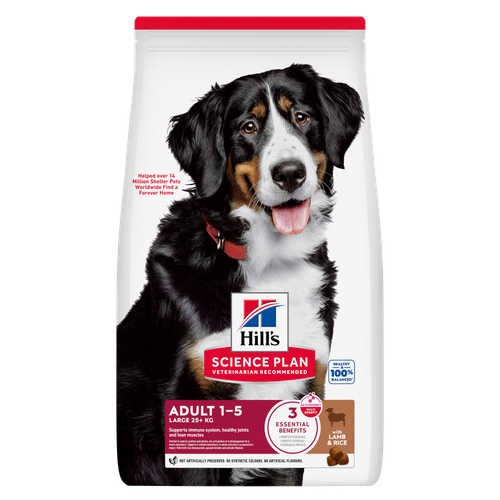 Large Breed Adult Dog Food
Large Breed Adult Dog FoodHill's Science Plan Large Breed Adult Dog Food with Lamb & Rice is a complete pet food, specially formulated with ActivBiome+ Multi-Benefit Technology.
This food is specifically designed to fuel the energy needs of large breed dogs during the prime of their life.Shop Now Perfect Digestion Large Breed Puppy Food
Perfect Digestion Large Breed Puppy FoodPrecisely balanced nutrition with Hill's ActivBiome+ prebiotic blend actively contributes to supporting digestive health and overall wellbeing to help your pet feel their best
Shop NowFeatured products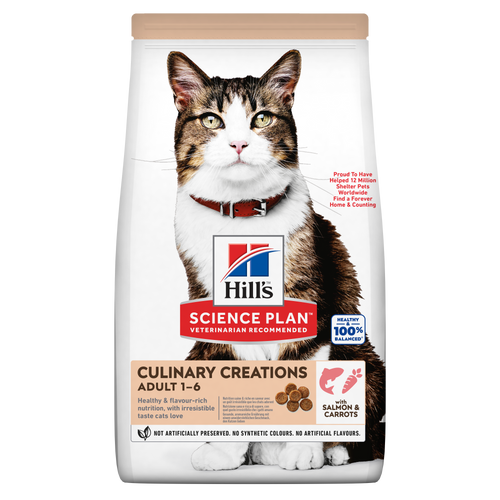 CULINARY CREATIONS ADULT CAT FOOD
CULINARY CREATIONS ADULT CAT FOODHill's Science Plan CULINARY CREATIONS Adult cat food with Salmon & Carrots was formulated to provide a great-tasting experience to cats. Its delicious flavour and texture are combine with essential nutrients to support cats' optimal health during the prime time of their life. Specially formulated with high-quality salmon protein, essential taurine for heart health & balanced minerals to support kidneys & bladder.
Shop Now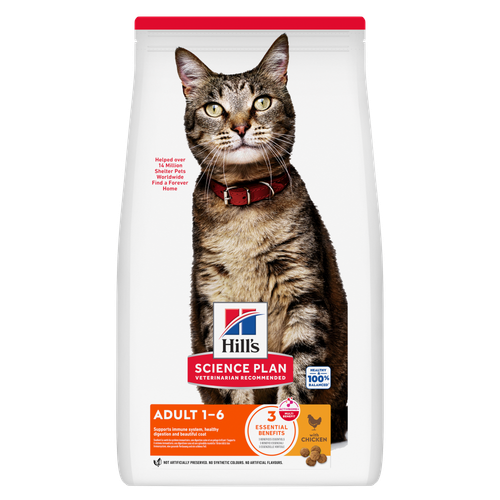 Adult Cat Food
Adult Cat FoodHill's Science Plan Adult Cat Food with Chicken is a complete pet food, specially formulated with ActivBiome+ Multi-Benefit Technology.
This food is specially formulated to fuel the energy needs of cats during the prime of their life.Shop Now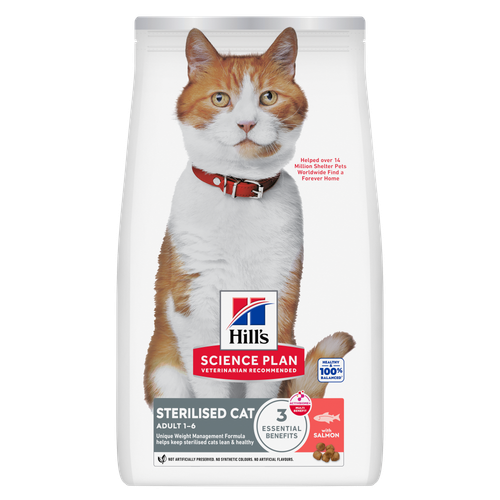 Sterilised Adult Cat Food
Sterilised Adult Cat FoodHill's Science Plan Adult Sterilised Cat Dry Food with Salmon is specially formulated with ActivBiome+ Multi-Benefit Technology. It is a precisely balanced nutrition, tailored to meet the needs of sterilised cats, to help keep sthem lean & healthy.
Shop Now -
Dog
- Dog Tips & Articles
-
Health Category
- Weight
- Food & Environmental Sensitivities
- Urinary
- Digestive
- Joint
- Kidney
-
Life Stage
- Puppy Nutrition
- Adult Nutrition
- Senior Nutrition
Cat- Cat Tips & Articles
-
Health Category
- Weight
- Skin & Food Sensitivities
- Urinary
- Digestive
- Kidney
-
Life Stage
- Kitten Nutrition
- Adult Nutrition
Featured articles The Incredible Science Behind Your Pet's Microbiome
The Incredible Science Behind Your Pet's MicrobiomeLearn what your pet's microbiome is, how it contributes to your pet's gut and overall health, and why nutrition is important in maintaining healthy microbiomes.
Read More Pet Nutrition: What Makes "Healthy" Pet Food Healthy? | Hill's Pet
Pet Nutrition: What Makes "Healthy" Pet Food Healthy? | Hill's PetIn people, the right diet is very important. If you are eating the wrong way for your metabolism, activity level, age and lifestyle you could end up with health issues.
Read More Microchipping: The Facts | Hill's Pet
Microchipping: The Facts | Hill's PetThe government has announced that as of April 2016, all dogs in the UK must be microchipped by law.
Read More -


Have you ever seen your cat licking themselves and body and wondered what the reason is for the peculiar habit? It turns out that they don't just do it to be clean. As dedicated followers of a regular grooming routine, cats spend a lot of time keeping themselves in tip top condition, but this grooming behaviour is also tied to your cat’s physical and emotional wellbeing.
Why Do Cats Lick Themselves?
Licking is one way that cats clean themselves; distributing saliva all over their body helps them with grooming and they tend to use their front paws to wash their faces and behind their ears. Primping takes up a lot of a cat's time, with some cats spending up to half their day grooming, according to the PDSA. Because evaporating saliva helps cats cool off when they're overheated, licking their paws provides the added benefit of cooling relief in high temperatures.
According to Cats Protection, another reason that cats lick themselves is that licking — and grooming in general — releases endorphins, the body's feel-good hormones. It's a calming activity.

When is it too much?
If your cat is spending more time than normal grooming themselves, paying too much attention to their paws or other parts of their body, or actually pulling out bits of fur, it likely indicates an underlying medical issue. Take your cat to the vet so they can identify and treat the issue behind your cat's behaviour.
There are several physical and psychological issues that can lead to excessive grooming, explains the PDSA, including:
- Allergies
- Parasites
- Injuries or skin infection (including the nail bed)
- Pain
- Dry skin
- Stress or anxiety
Causes of cat anxiety include: being separated from their pet parent; environmental changes, like moving into a new home; and perceived threats, such as having another pet in the household that they don’t get on with, or seeing neighbourhood cats outside, close to (or in!) their territories.


Tasty Tips
Diagnosis and Treatment
Is your cat licking too much? If you think their behaviour is excessive, keep a closer eye on them. Take note of when they lick their paws or other parts of their body and how long they spend doing it. Note any changes to their skin or fur, such as irritation or hair loss. Additionally, check for any signs of pain such as changes in behaviour or reluctance to jump. If you notice any of these changes make sure to bring them in to their veterinarian. This information will help your vet to make an accurate diagnosis.
At the appointment, your vet will complete a physical exam of your cat. They might run a few tests to help determine the cause of and treatment for their behaviour. Treatment will vary based on what your veterinarian diagnoses, but may include skin cream or shampoos, oral or injected anti-inflammatory medicine, changes to your cat's food, flea and tick prevention medicine, or antidepressant or anti-anxiety medicine.
The PDSA adds that environmental changes, like using a pheromone diffuser at home or making sure your cat isn’t competing with other cats for resources, will help to decrease stress. You can also add enrichments so that your cat can get more activity and stimulation within your house. This can be as simple as feeding them using a food puzzle, providing them more opportunities to utilise their climbing instincts by installing cat trees or shelves, and having them hunt for their toys.
Your vet may also refer you to a cat behaviourist if they think that stress is contributing to the problem and that environmental or social modifications could help to reduce stress, notes Cats Protection.
Basically, licking themselves is a completely normal cat behaviour, , but if they show signs of excessive licking, speak with your vet as soon as possible. Together, you and your vet can determine the best treatment for your furry friend.


Christine O'Brien is a writer, mom, and long-time cat parent whose two Russian Blues rule the house. Her work also appears in Care.com, What to Expect, and Fit Pregnancy, where she writes about pets, pregnancy, and family life. Find and follow her on Instagram and Twitter @brovelliobrien.
Related products

Hill's Science Plan Adult Cat Food with Chicken is a complete pet food, specially formulated with ActivBiome+ Multi-Benefit Technology.
This food is specially formulated to fuel the energy needs of cats during the prime of their life.

Hill's Science Plan Adult Sterilised Cat Dry Food with Salmon is specially formulated with ActivBiome+ Multi-Benefit Technology. It is a precisely balanced nutrition, tailored to meet the needs of sterilised cats, to help keep sthem lean & healthy.
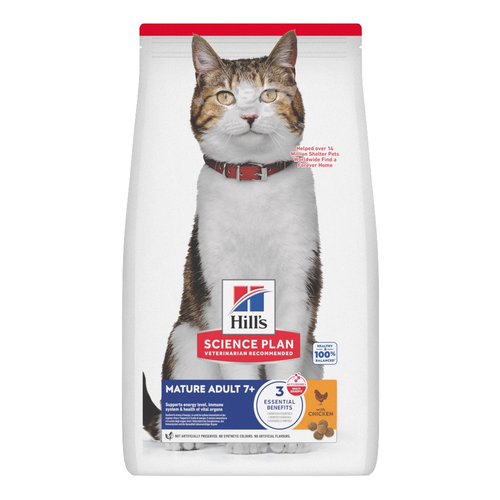
Hill's Science Plan Mature Adult Cat Food with Chicken is a complete pet food, specially formulated with ActivBiome+ Multi-Benefit Technology.
This food supports graceful aging in cats, providing a synergistic ingredient blend to help support energy & activity levels.

Hill's Science Plan CULINARY CREATIONS Adult cat food with Salmon & Carrots was formulated to provide a great-tasting experience to cats. Its delicious flavour and texture are combine with essential nutrients to support cats' optimal health during the prime time of their life. Specially formulated with high-quality salmon protein, essential taurine for heart health & balanced minerals to support kidneys & bladder.
Related articles

Learn how your cat's poo can be a good indicator of her overall health, including how to spot unhealthy or abnormal cat poop and what it might mean.

Understand common skin issues in cats and how to manage them effectively. Learn signs and prevention, and get care tips. Find out more at Hill's Pet.

Cats with sensitive skin have special needs and even healthy cats can sometimes develop poor skin health. Learn more about sensitive skin symptoms in your cat, what you can do to help your pet feel more comfortable and get recommendations on sensitive skin cat food.

Learn about the causes of cat dermatitis, how to spot the symptoms and the best treatment options. Visit Hill's Pet for detailed guidance and tips.

Put your cat on a diet without them knowing
Our low calorie formula helps you control your cat's weight. It's packed with high-quality protein for building lean muscles, and made with purposeful ingredients for a flavourful, nutritious meal. Clinically proven antioxidants, Vitamin C+E, help promote a healthy immune system.
Put your cat on a diet without them knowing
Our low calorie formula helps you control your cat's weight. It's packed with high-quality protein for building lean muscles, and made with purposeful ingredients for a flavourful, nutritious meal. Clinically proven antioxidants, Vitamin C+E, help promote a healthy immune system.

